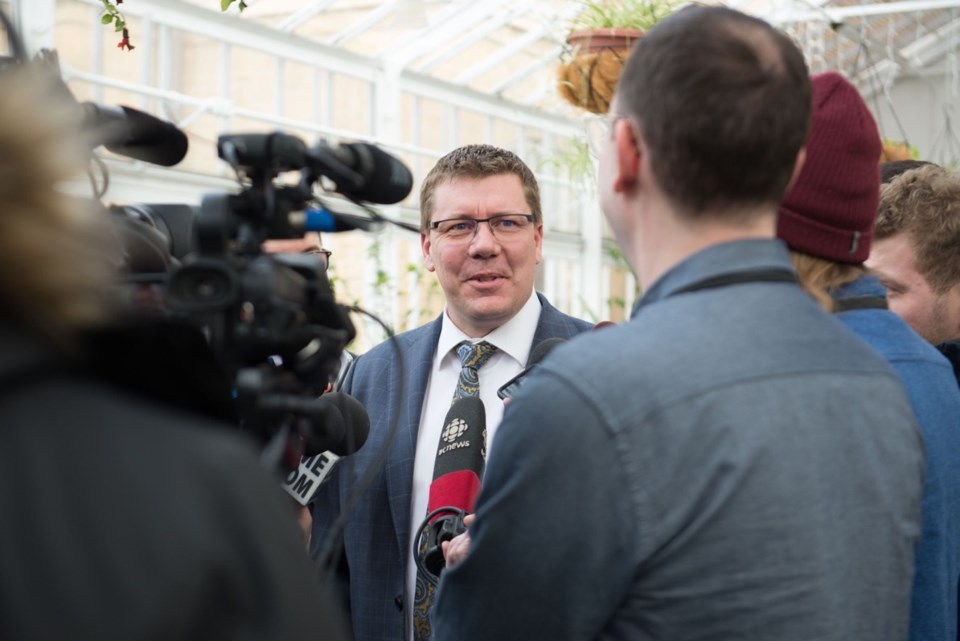The Saskatchewan Party was re-elected to its historic fourth majority government on October 26, taking 50 of 61 seats, and giving Premier-elect Scott Moe his first “big honkin’ election win,” as he put it, in a snap election called just a month earlier.
It was a gain of four seats for the Saskatchewan Party. The opposition New Democratic Party, led by Ryan Meili, won 11 seats, a decline of two.
At dissolution, the Saskatchewan Party had held 46 seats, the NDP had 13, and there were two vacant seats.
Late into the night it looked like not much at all had changed, with similar the seat counts and leaders of both of the major parties retaining their seats. But that changed late into the night. The Saskatchewan Party kept picking up additional seats, and an upset came in for New Democratic Party (NDP) Leader Ryan Meili. With 50 of 50 polls reporting in in Meili’s Saskatoon Meewasin riding, he was behind the Saskatchewan Party’s Rylund Hunter by 83 votes.
However, that could change in the coming days, as there were 1,656 vote by mail ballots issued by Elections Saskatchewan for Saskatoon Meewasin. Due to the pandemic, votes by mail received by 8 p.m. on election day will be counted by Elections Saskatchewan on October 28, instead of on the date of the final count.
The final result may not be known until the final election count on November 7.
The COVID-19 pandemic led to an extraordinary increase both mail-in ballots and participation in advanced polls. Those vote by mail ballots could be the deciding factor in several close races. The brand-new Buffalo Party of Saskatchewan (“Saskatchewan wants a fair deal from Ottawa”)| outdid all other minor parties, scoring 11,050 votes for a 2.9 per cent share. That was accomplished with just 17 candidates running. They beat out the Saskatchewan Green Party, which fielded 60 candidates but only gained 9,091 votes, or 2.4 per cent. The Progressive Conservatives had 31 candidates, and garnered 7,935 votes, or 2 per cent. The Liberals, with just three candidates, received 338 votes, or 0.09 per cent.
This is the third provincial election since the COVID-19 pandemic hit, and in each case, the incumbent government won, with a stronger showing either in seats or vote share. New Brunswick’s Progressive Conservative government under Blaine Higgs was the first, moving from a minority to a majority government. A similar pattern happened just days ago in British Columbia, where a minority NDP-BC government lead by John Horgan won a majority.



